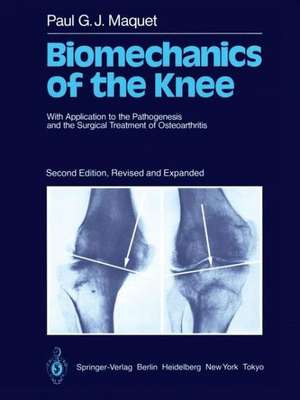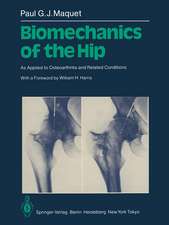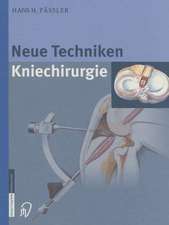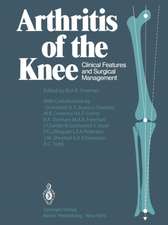Biomechanics of the Knee: With Application to the Pathogenesis and the Surgical Treatment of Osteoarthritis
Autor P.G.J. Maqueten Limba Engleză Paperback – 9 feb 2012
Preț: 857.93 lei
Preț vechi: 903.08 lei
-5% Nou
Puncte Express: 1287
Preț estimativ în valută:
164.16€ • 172.32$ • 136.26£
164.16€ • 172.32$ • 136.26£
Carte tipărită la comandă
Livrare economică 11-25 aprilie
Preluare comenzi: 021 569.72.76
Specificații
ISBN-13: 9783642617331
ISBN-10: 3642617336
Pagini: 332
Ilustrații: XVIII, 306 p.
Dimensiuni: 210 x 280 x 17 mm
Greutate: 0.82 kg
Ediția:2nd ed. 1984. Softcover reprint of the original 2nd ed. 1984
Editura: Springer Berlin, Heidelberg
Colecția Springer
Locul publicării:Berlin, Heidelberg, Germany
ISBN-10: 3642617336
Pagini: 332
Ilustrații: XVIII, 306 p.
Dimensiuni: 210 x 280 x 17 mm
Greutate: 0.82 kg
Ediția:2nd ed. 1984. Softcover reprint of the original 2nd ed. 1984
Editura: Springer Berlin, Heidelberg
Colecția Springer
Locul publicării:Berlin, Heidelberg, Germany
Public țintă
ResearchCuprins
I. Aims and Limitations of the Work.- II. Review of the Literature.- III. Methods.- I. Mathematical Analysis.- II. Experiments on Anatomical Specimens.- III. Photoelastic Models.- IV. Clinical and Radiological Material.- IV. Mechanics of the Knee.- I. Load and Mechanical Stresses.- II. Mechanical Stress in the Knee.- III. Conclusion.- V. The Pathomechanics of Osteoarthritis of the Knee.- I. Theoretical Analysis of the Causes of Knee Osteoarthritis.- II. Radiographic Examination of the Osteoarthritic Knee with Demonstration of the Effect of Changes in the Compressive Force on the Stress Distribution.- VII. The Use of Photoelastic Models to Illustrate How the Position of Compressive Femoro-Tibial and Patello-Femoral Forces Affects the Distribution of Articular Stresses.- IV. Osteoarthritis of the Knee of Mechanical Origin.- VI. Instinctive Mechanisms Which Reduce Stress in the Knee.- I. Effects of Limping.- II. Use of a Walking Stick.- III. Comment and Conclusion.- VII. Biomechanical Treatment of Osteoarthritis of the Knee.- I. Rationale of Biomechanical Treatment.- II. Biomechanical Treatment of Osteoarthritis of the Knee.- VIII. Results.- A. Femoro-Tibial Osteoarthritis.- B. Patello-Femoral Osteoarthritis.- IX. Conclusions.- Appendix. Remarks About the Accuracy of the Calculation of Forces and Stresses in the Knee Joint.- A. Introduction.- 1. The Weights.- 2. Formularization.- 3. The Laws.- 4. Direct Personal Measurements.- B. Analysis of the Influence of the Variation of Time Between Two Successive Phases.- C. Influence of a Systematic Error of 10% in All the Measurements of Braune and Fischer.- D. Theory of Cumulated Errors, a Variation of 0.2 mm Being Assumed for All the Measurements.- E. Influence of a Variation of the Weight-Bearing Surfaces.- G. Direct Measurements.- H. Conclusion.- References.



























